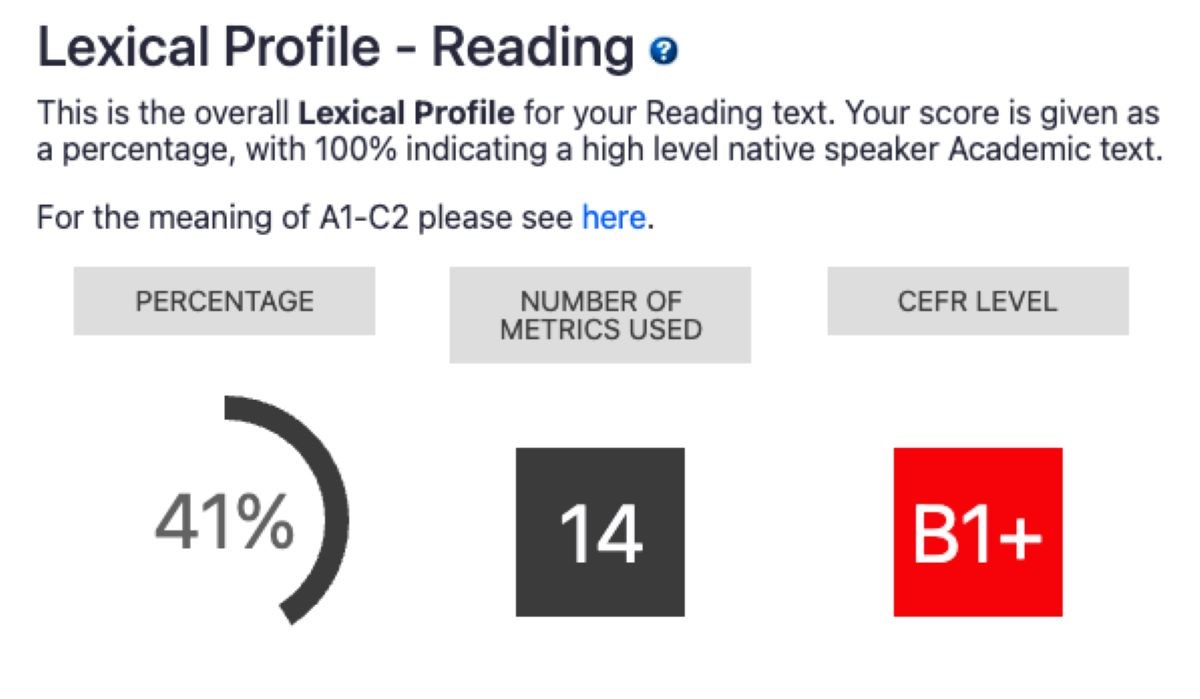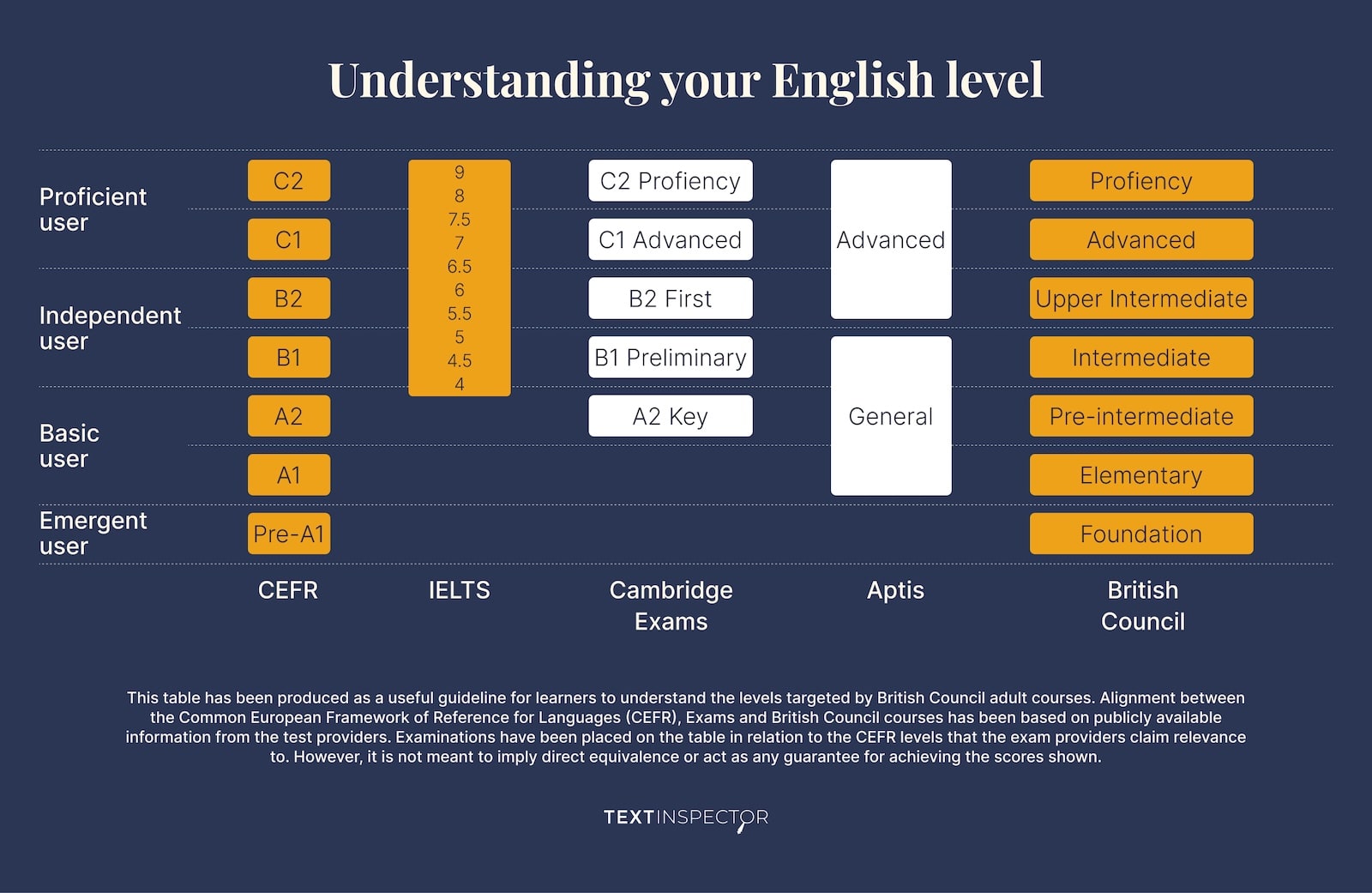
The Harry Potter series is not only a global literary success but also a valuable resource for English learners. It’s an exciting and well-known story. So, it is often the first book people read when learning a new language.
Spanning CEFR levels B1 to C1, the books cater to intermediate to advanced readers, with increasing linguistic complexity as the series progresses. Character development, plot depth, and the target audience evolve alongside the language, making the series progressively more challenging.
The saga can be divided into two parts based on tone, difficulty, and themes. The first three books are lighter and more accessible (B1-B2 CEFR level), featuring self-contained mystery plots and simpler language. In contrast, the later books become darker, addressing mature topics like death, war, and betrayal, with a continuous narrative and more complex vocabulary (B2-C1 CEFR level).
This blog post offers a CEFR analysis of the first three books to help English teachers choose suitable reading materials, ensuring an engaging and effective learning experience.

Breakdown of the First Three Books by CEFR Level
1. Harry Potter and the Philosopher’s Stone (B1 – Intermediate)
Harry Potter and the Philosopher’s Stone is best suited to B1 (Intermediate) level learners due to its clear and simple-to-read sentence constructions, uncomplicated yet engaging vocabulary, and mainly concrete descriptions, which are easily comprehensible to readers who are establishing their English levels.
However, B1 learners may have some difficulty with specific magical lexis and British cultural references, for example, “bogey-flavoured Bertie Bott’s Every Flavour Beans”, and the narrative structured mainly around dialogue, which requires awareness of patterns in spoken English.
Example passage: “Harry had never even imagined such a strange and splendid place. He could see a high, glass ceiling above him, a vast hall filled with long tables, and thousands of floating candles lighting the room. The golden plates and goblets on the tables gleamed in the candlelight, and at the far end of the hall, an old man with a long white beard sat smiling at the students.”
Why is this B1?
- Simple sentence structure: Mostly straightforward sentences with limited subordination.
- Concrete descriptions: Uses clear, visual imagery (“floating candles,” “golden plates,” “long white beard”) that are easy for intermediate learners to understand.
- Basic but engaging vocabulary: Words like glass ceiling, vast hall, and candlelight add richness without being overly complex.

To see the CEFR level of your own texts, try using Text Inspector and discover how it can help you analyze readability and vocabulary difficulty.
2. Harry Potter and the Chamber of Secrets (B1/B2 – Intermediate to Upper-Intermediate)
Harry Potter and the Chamber of Secrets is on the B1/B2 (Intermediate to Upper-Intermediate) level due to its slightly higher vocabulary and sentence complexity, longer descriptive passages, and more developed magical vocabulary.
More complex forms of dialogue are also used in the book, and students have to pay closer attention to the tone and purpose. However, readers at this level might find it difficult to deal with more uses of idiomatic language and more suspenseful, complicated narratives, which demand more reading comprehension skill.
Example passage: “It was a magnificent book. A large, leather-bound volume, with a title embossed in golden letters across the front. Trembling, Harry opened it. The pages were completely blank. He stared, wondering why someone would have hidden an empty book in a bathroom.”
Why is this B1?
- Simple sentence structures: Mostly short, clear sentences with minimal subordination (“Trembling, Harry opened it.”).
- Basic but engaging vocabulary: Words like magnificent, leather-bound, trembling add richness without being too advanced.
- Concrete descriptions: The passage describes a physical object in a straightforward manner (“large, leather-bound volume,” “title embossed in golden letters”).
- Clear narrative progression: The passage presents a simple sequence of events that B1 learners can follow easily.
3. Harry Potter and the Prisoner of Azkaban (B1/B2 – Intermediate to Upper-Intermediate)
This book introduces slightly more complex sentence structures and a richer vocabulary compared to the first two.
Descriptive passages are longer and more detailed, and the dialogue becomes more nuanced, requiring a better understanding of tone and context.
Additionally, the plot is more intricate, with time travel and deeper character backstories adding layers of complexity.
Example Passage: “The wind whistled through the night. It was freezing, and he could see his breath coming out in misty clouds. The sky was pitch-black and dotted with stars. The only sound was the rustling of the leaves in the trees. Then, quite suddenly, something appeared out of the darkness. A huge, shaggy creature was bounding towards him, its eyes glinting in the moonlight.”
Why is this B1/B2?
- More complex sentence structures: Sentences become longer and more varied, often including dependent clauses, adverbs, and transitions that require stronger reading comprehension.
- Richer vocabulary: The book introduces a wider range of descriptive and atmospheric words, such as whistled, misty clouds, rustling, and glinting.
- Increased description: Compared to the first two books, Prisoner of Azkaban features more detailed scene-setting and character descriptions.
- Atmospheric storytelling: The book’s darker, more suspenseful tone demands stronger interpretative skills. The narrative often hints at hidden meanings, foreshadowing, and subtle emotional cues that B1 learners might struggle with but B2 learners can begin to grasp. Understanding the mood and tension in scenes, especially those involving the Dementors or time travel, requires a higher level of inference and engagement with the text.
This book remains accessible to B1 learners but starts incorporating B2-level elements, making it more suitable for readers transitioning to upper-intermediate proficiency.
Factors Affecting Readability in Harry Potter
There are several key factors that decide the CEFR level of the Harry Potter series, with varying degrees of accessibility.
- Vocabulary development throughout the series: The earlier books use more concrete and basic vocabulary, whereas the later books utilize more abstract terms, Latin-derived spell names, and more sophisticated descriptions. Philosopher’s Stone uses words like cloak, whisper, and strange, which evolve into threatening, concealed, and perplexed in later books, indicating an increase in linguistic maturity.
- Greater complexity of sentences: The initial books have basic sentence structures, and therefore they are suitable for B1 students. As the series progresses, the sentences are longer with added clauses, passive voice, and higher-level punctuation. This is suitable for B2 and C1 levels since the readers are required to understand a number of ideas in a single sentence.
- Figurative language and idioms: Rowling employs numerous metaphors, similes, and idioms fairly frequently, enriching the narrative but making the text hard to read for learners. The examples “his heart sank” or “she was on edge” require learners to leave the literal meaning behind and interpret figurative language, something only they need to do at advanced levels of CEFR.
- Narrative perspective and character dialogue: The series maintains a third-person limited perspective, largely from Harry’s point of view. Dialogue, however, becomes varied as characters mature, employing sarcasm, irony, and differences in dialect. This requires more inferencing skill, particularly in later books when conversations among characters become more intricate.
Using Harry Potter in the English Classroom
Teachers can effectively use Harry Potter in English lessons by selecting books based on CEFR levels, adapting activities, and focusing on specific language skills. For B1 learners, Philosopher’s Stone and Chamber of Secrets are ideal due to their simpler vocabulary and sentence structures.
More advanced students at B2-C1 can move on to later books like Goblet of Fire, which feature more complex language and storytelling.
Activities should be adjusted to suit different proficiency levels. Lower-level students can engage in vocabulary exercises, simplified summaries, and comprehension questions, while higher-level learners can analyze themes, debate moral issues, and explore character development.
The series also supports specific language skills, such as vocabulary expansion, reading comprehension, speaking, and writing. By tailoring book selection and tasks to students’ needs, teachers can create engaging and effective English lessons using the Harry Potter series.
Conclusions
The Harry Potter series shows a clear CEFR level progression, starting at B1 in Philosopher’s Stone and reaching B2-C1 in later books like Order of the Phoenix and Deathly Hallows. This progression makes the series a valuable resource for English teachers, allowing them to select passages from the books that match their students’ proficiency levels and adapt lessons accordingly.
The next blog post will explore the CEFR levels of the final four books in the saga. Incorporating Harry Potter into English lessons enhances vocabulary, reading skills, and cultural discussions, making learning more engaging.
Tools like Text Inspector can provide precise text difficulty analysis, helping educators tailor lessons effectively. By using this beloved series, teachers can create dynamic and immersive learning experiences, fostering both a love for reading and language development.
Share
Related Posts

What Is The CEFR Level of Harry Potter? (Part 1)
12 May, 2025
The Harry Potter series is not only a global literary success but also a valuable […]
Read More ->
CEFR Levels Explained: Your Comprehensive FAQ Guide
27 June, 2025
The Common European Framework of Reference for Languages (CEFR) is essential for language learning, providing […]
Read More ->
What Is The CEFR Level of Harry Potter? (Part 2)
19 May, 2025
In our previous article, we explored the CEFR levels of the first three Harry Potter […]
Read More ->